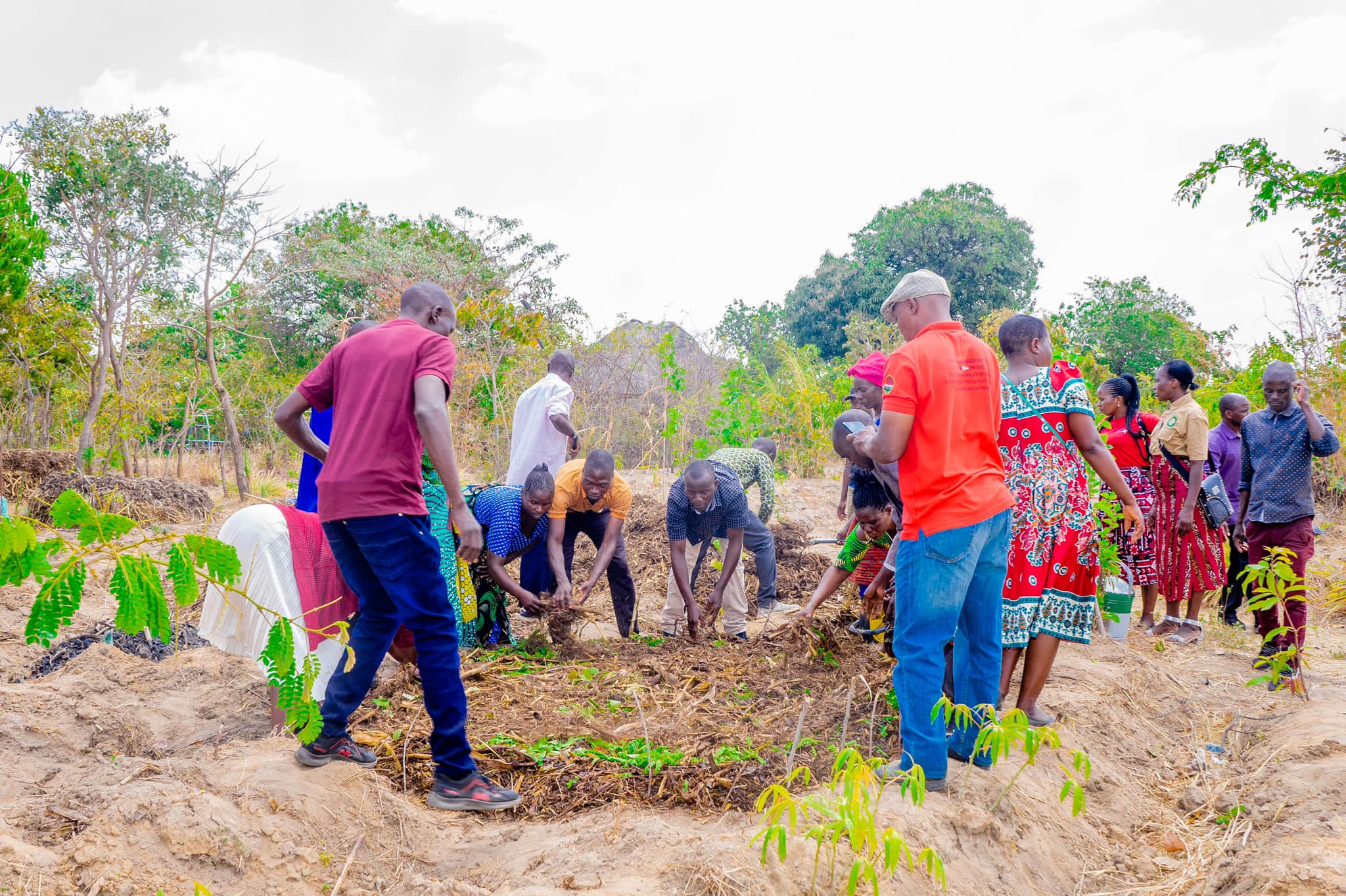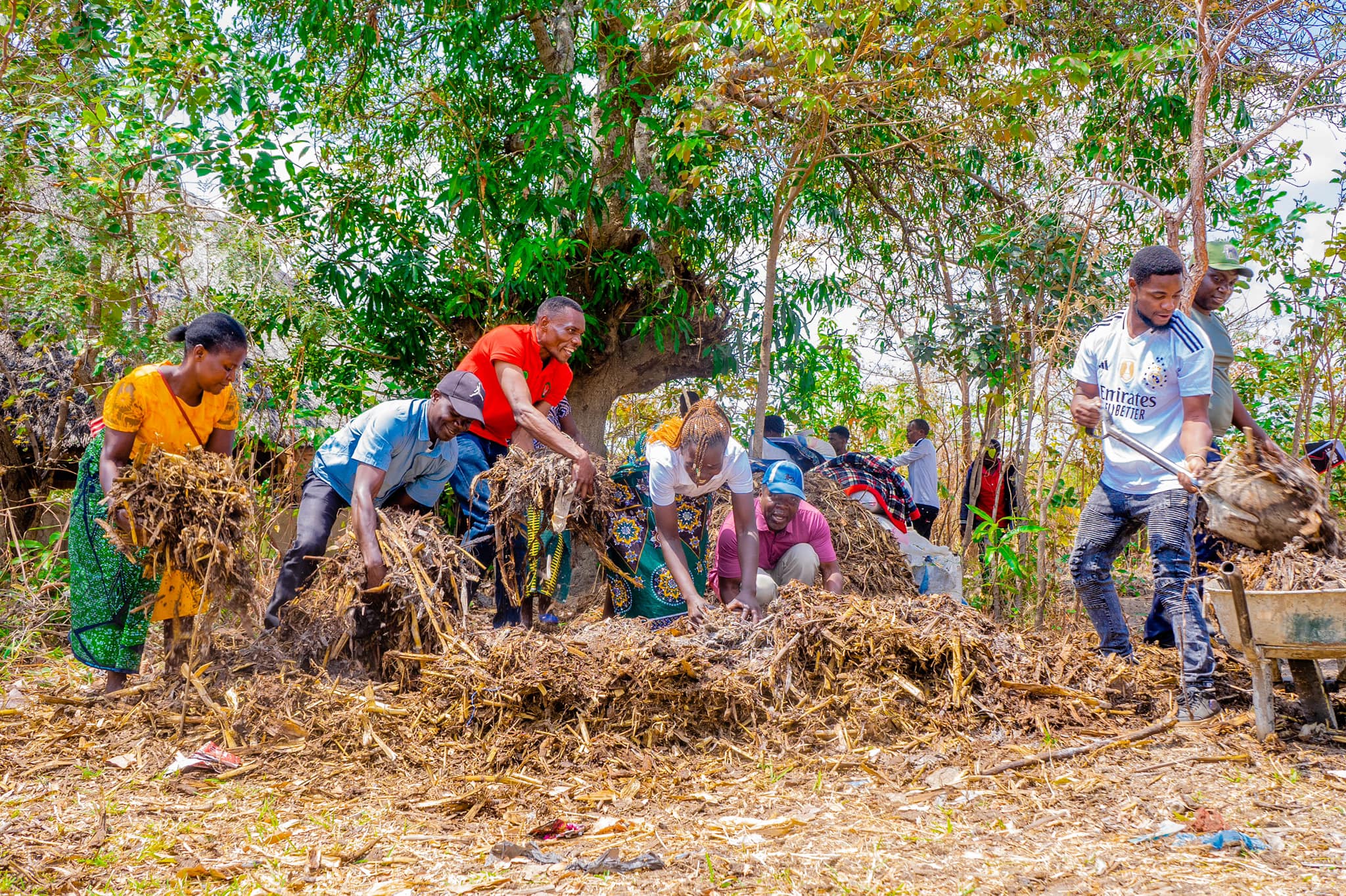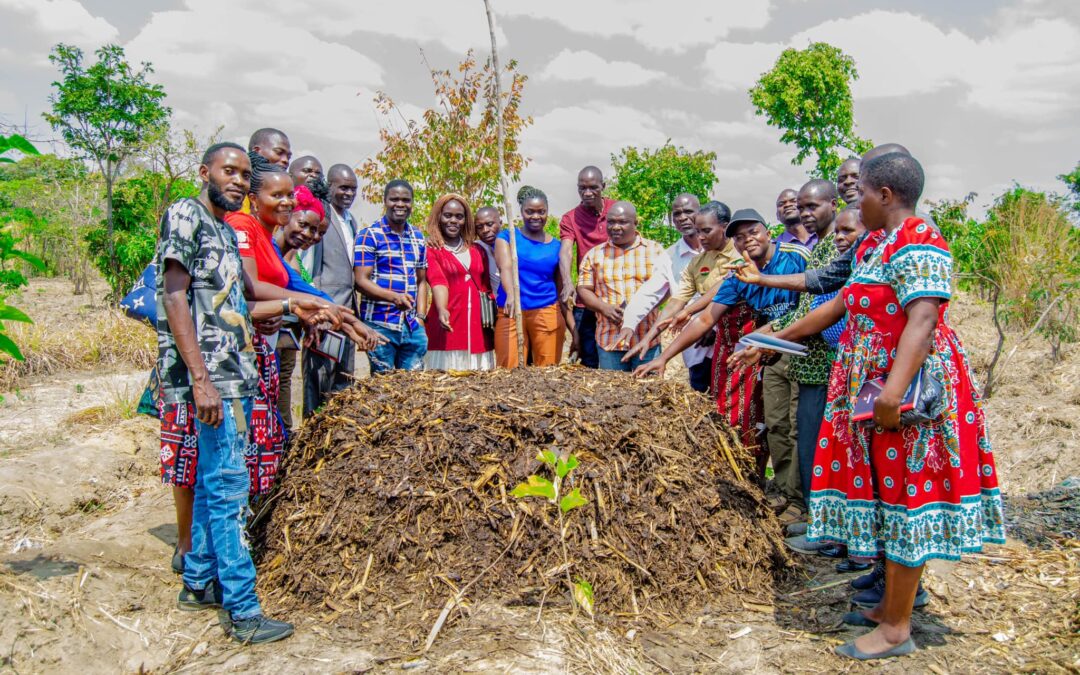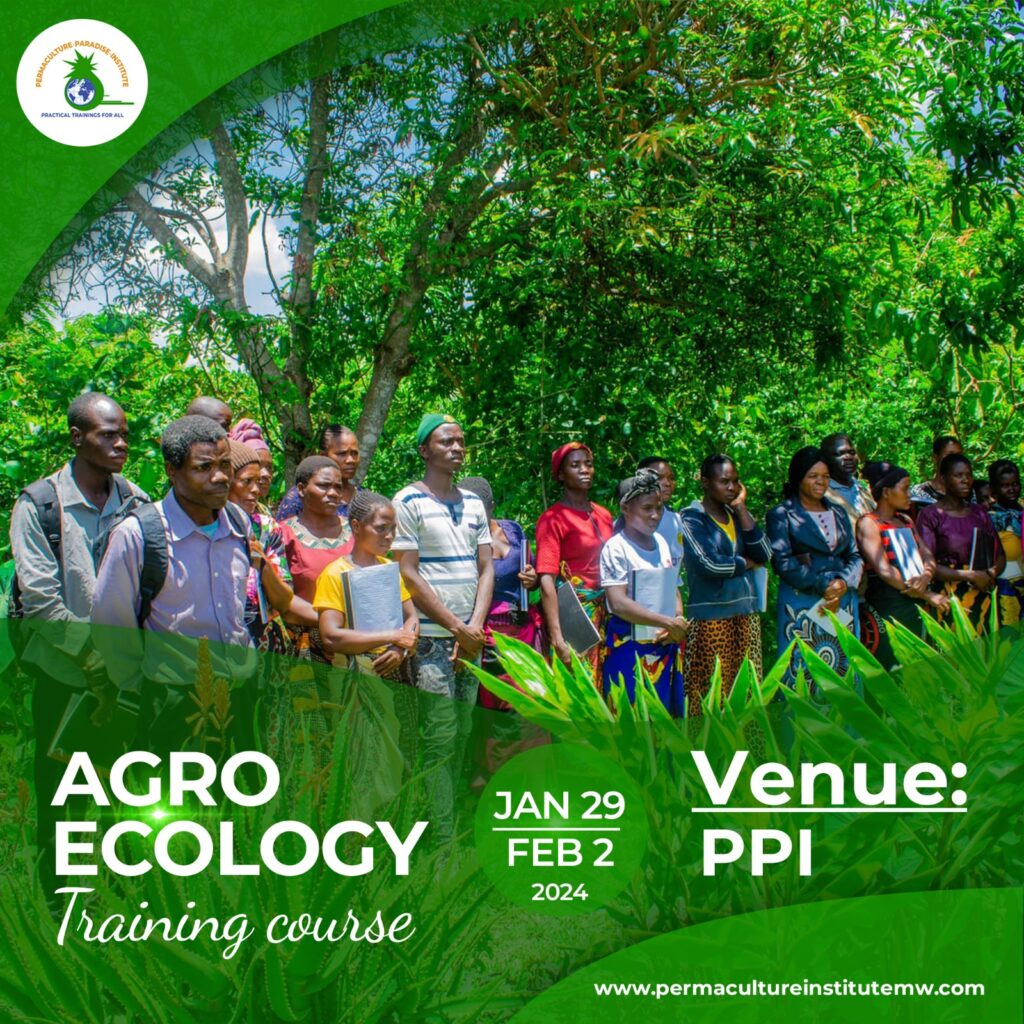The second day of the Permaculture training with 62 farmers from the Nyika-Vwaza Association (NVA) and the Nkhotakota Wildlife Reserve Association (NAWIRA) kicked off with a deep dive into one of the most fundamental aspects of farming: soil science and management principles. The farmers, who are part of a forest reserve restoration project in northern and central Malawi, gathered with great anticipation, ready to enhance their understanding of the land they work with every day.

Understanding Soil – The Foundation of Life
As the morning session unfolded, the trainers emphasized the critical role that soil plays in the overall ecosystem. The farmers were introduced to the structure, composition, and life within soil, which often goes unnoticed. They learned that healthy soil is alive, teeming with microorganisms that play a vital role in plant growth, water retention, and nutrient cycling.
Interactive demonstrations helped illustrate the differences between soil types, highlighting their individual benefits and limitations. From sandy soils that drain quickly to clay soils that hold water, the farmers were shown how to identify the types of soil in their own fields. Understanding these characteristics is key to managing soil health, fertility, and productivity in both forest restoration and farming.
The day progressed with practical lessons on soil management principles that are essential for both sustainable agriculture and forest restoration. Farmers were introduced to techniques like composting, mulching, and crop rotation, all designed to improve soil health naturally.
One of the highlights of the day was the session on composting, where farmers learned how to create rich, organic matter from waste. The trainers emphasized that compost not only boosts the soil’s nutrient levels but also improves its structure and moisture retention, which is crucial for combating erosion and supporting tree growth in forest restoration efforts.
Another key takeaway from the day was the importance of soil cover. Farmers were taught how to protect the soil from erosion and nutrient loss by using mulch and cover crops, which also help suppress weeds and maintain soil moisture. This knowledge is especially important for communities engaged in reforestation, as it allows them to manage the soil without the need for chemical inputs that could harm the environment.
The farmers were encouraged to view soil not just as dirt, but as a living system that requires care and balance. One participant expressed how eye-opening the session was: “I always thought soil was just there, but now I realize how much life is in it and how we can work with it to make our land more productive.”
With this newfound knowledge, these farmers are better equipped to enhance the fertility of their fields and restore forested areas. The lessons in soil science and management are critical, not only for ensuring food security but also for nurturing healthy ecosystems that support wildlife and biodiversity.

Building Toward a Sustainable Future
Day two ended with a group discussion, where farmers shared how they plan to implement what they’ve learned in their own practices. Many expressed excitement about using compost and mulching to enrich their soils, while others were eager to apply these techniques to their forest restoration projects.
As the training moves forward, these farmers are steadily gaining the skills and confidence needed to restore and regenerate the land. Tomorrow, the focus shifts to water management—an equally vital component in ensuring the success of sustainable farming and reforestation efforts.
Stay tuned as the journey continues, with every lesson bringing these farmers closer to transforming their communities and landscapes for the better.



